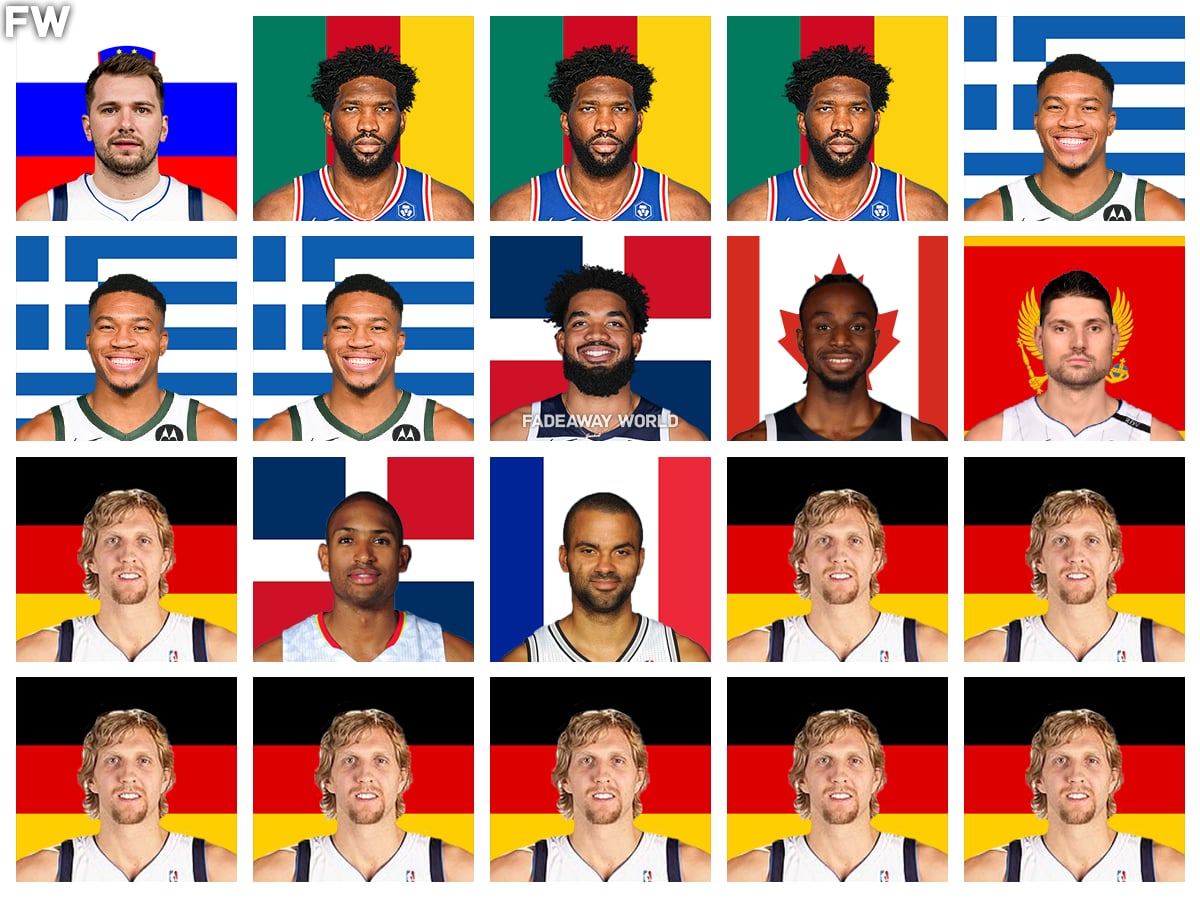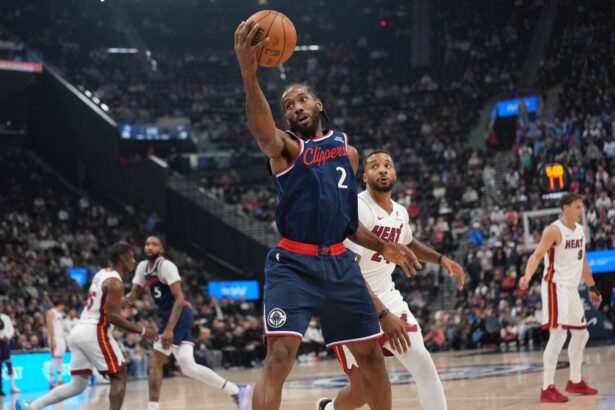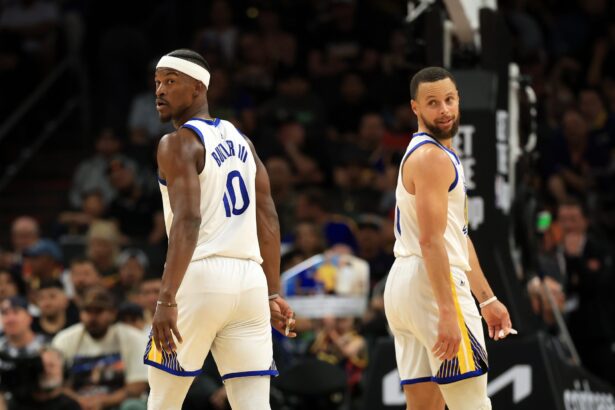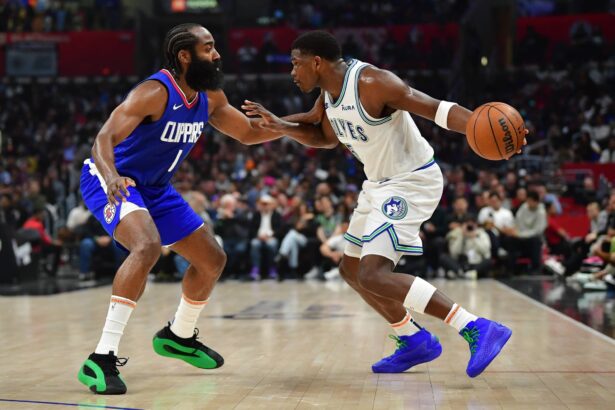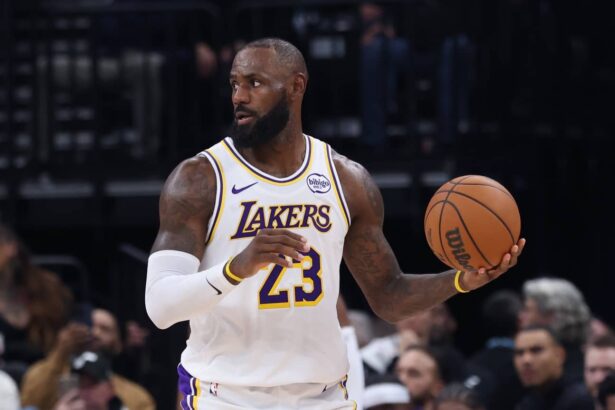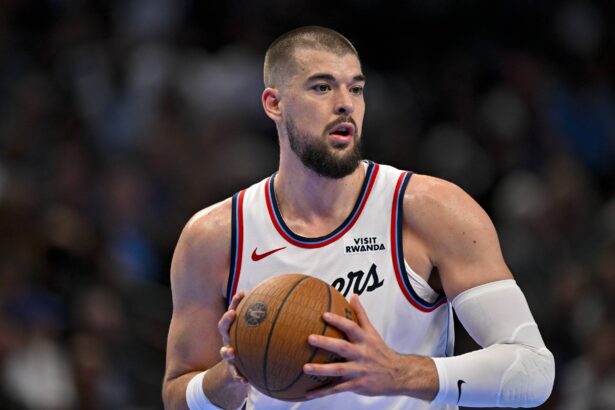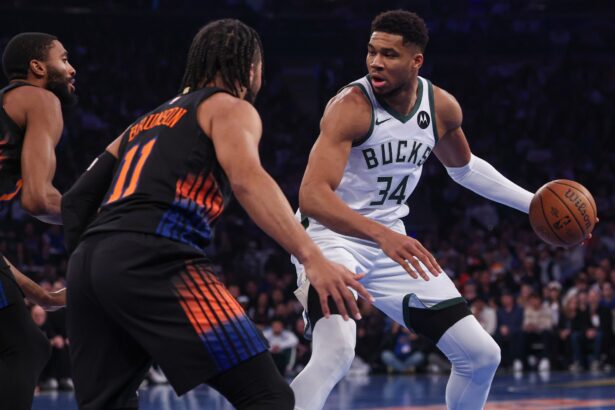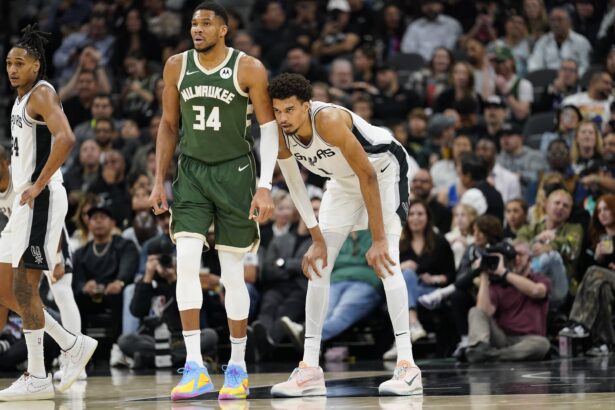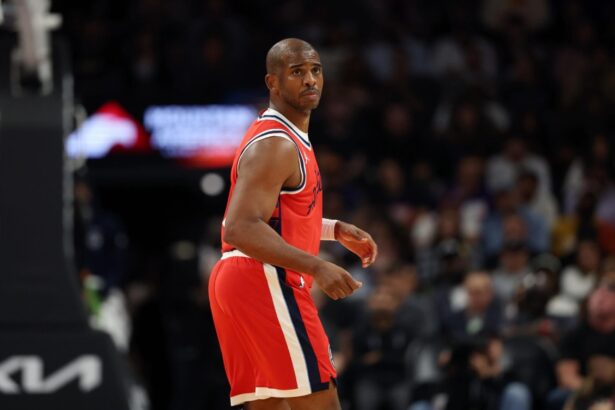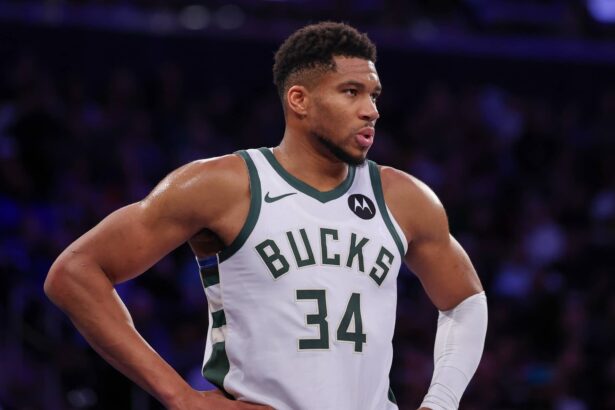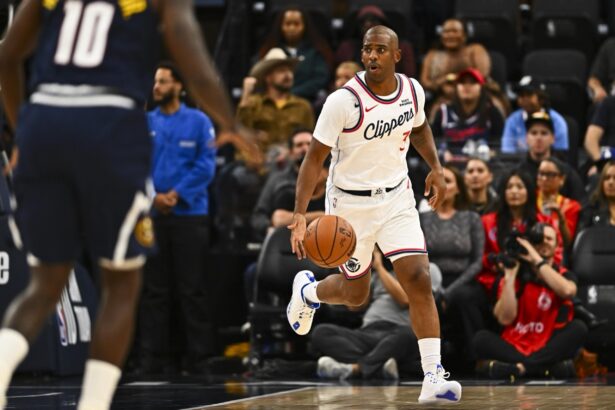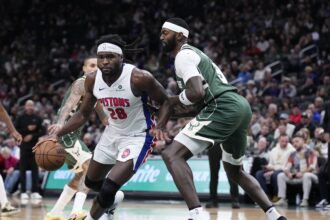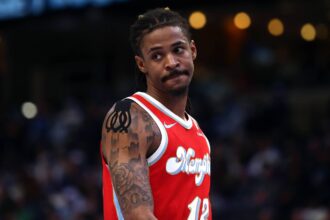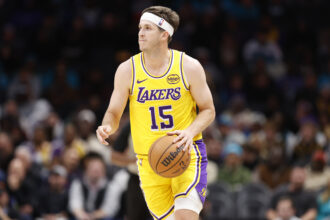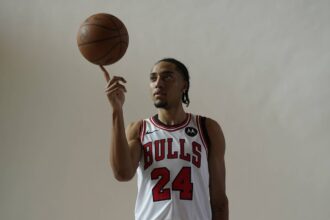Over the last two decades, the NBA has witnessed a remarkable influx of international talent, reshaping the league and producing some of the most prolific scorers in basketball history. Giannis Antetokounmpo, Luka Doncic, and Joel Embiid are currently leading this global renaissance, two dynamic stars who have captivated fans with their extraordinary scoring prowess. This article delves into the international scoring leaders over the past 20 years.
- 2023-24: Luka Doncic (33.9 PPG)
- 2022-23: Joel Embiid (33.1 PPG)
- 2021-22: Joel Embiid (30.6 PPG)
- 2020-21: Joel Embiid (28.5 PPG)
- 2019-20: Giannis Antetokounmpo (29.5 PPG)
- 2018-19: Giannis Antetokounmpo (27.7 PPG)
- 2017-18: Giannis Antetokounmpo (26.9 PPG)
- 2016-17: Karl-Anthony Towns (25.1 PPG)
- 2015-16: Andrew Wiggins (20.7 PPG)
- 2014-15: Nikola Vucevic (19.3 PPG)
- 2013-14: Dirk Nowitzki (21.7 PPG)
- 2012-13: Al Horford (17.4 PPG)
- 2011-12: Tony Parker (18.3 PPG)
- 2010-11: Dirk Nowitzki (23.0 PPG)
- 2009-10: Dirk Nowitzki (25.0 PPG)
- 2008-09: Dirk Nowitzki (25.9 PPG)
- 2007-08: Dirk Nowitzki (23.6 PPG)
- 2006-07: Dirk Nowitzki (24.6 PPG)
- 2005-06: Dirk Nowitzki (26.6 PPG)
- 2004-05: Dirk Nowitzki (26.1 PPG)
2023-24: Luka Doncic (33.9 PPG)
Stats: 33.9 PPG, 48.7% FG, 38.2% 3-PT FG, 78.6% FT
In the 2023-24 NBA season, Luka Doncic cemented his place as one of the league’s premier scorers by averaging an astounding 33.9 points per game. This average marks the highest scoring average of his career to date, showcasing his evolution as an offensive powerhouse despite playing alongside Kyrie Irving. His performance this season not only highlighted his scoring ability but also his versatility as a shooter, capable of making difficult shots from various spots on the court.
Beyond just his scoring, Doncic continued to demonstrate his all-around game, contributing significantly in rebounds (9.2) and assists (9.8), making him a constant triple-double threat. His leadership on the court was instrumental in helping the Dallas Mavericks make the Western Conference Finals this season.
2022-23: Joel Embiid (33.1 PPG)
Stats: 33.1 PPG, 54.8% FG, 33.0% 3-PT FG, 85.7% FT
Joel Embiid’s 2022-23 season was nothing short of spectacular, as he led the league in scoring with 33.1 points per game. Embiid’s offensive arsenal was on full display, combining his dominant post-play with a soft shooting touch that saw him hitting 54.8% of his field goal attempts. His ability to stretch the floor with a 33.0% shooting percentage from three-point range added another dimension to his game, forcing defenses to respect his outside shot and opening up driving lanes for his teammates.
His 85.7% free-throw shooting was particularly impressive for a big man, reflecting his work ethic and attention to detail because he averaged 11.7 free-throw attempts per game. Throughout the season, Embiid’s performances were pivotal in keeping the Philadelphia 76ers competitive in the Eastern Conference, and was awarded the MVP award.
2021-22: Joel Embiid (30.6 PPG)
Stats: 30.6 PPG, 49.9%, 37.1% 3-PT FG, 81.4%
In the 2021-22 season, Joel Embiid continued to showcase his dominance by averaging 30.6 points per game, further establishing himself as one of the premier scorers in the NBA. It was also impressive to see the superstar center play 68 games which was the highest mark of his career. Embiid finished runner-up to Nikola Jokic for the MVP award as well.
Embiid’s impact went beyond just scoring, as he also excelled in rebounding (11.7 RPG) and defense (1.5 BPG), making him a cornerstone for the Philadelphia 76ers. His presence in the paint deterred opponents from driving to the basket, while his offensive skill set forced teams to double-team him, creating opportunities for his teammates.
2020-21: Joel Embiid (28.5 PPG)
Stats: 28.5 PPG, 51.3% FG, 37.7% 3-PT FG, 85.9% FT
The 2020-21 season saw Joel Embiid elevate his game to new heights alongside Ben Simmons, averaging 28.5 points per game and solidifying his position as one of the top scorers in the league despite only playing 31.1 minutes per game in the season over 58 games. His shooting efficiency was remarkable, with a 51.3% field goal percentage and an impressive 37.7% from three-point range.
Embiid’s ability to hit from deep made him a matchup nightmare for opposing centers, who struggled to guard him both inside and outside the paint. His dominant performances were a key factor in the Philadelphia 76ers’ success during the year, as the team went to Game 7 of the second round before losing to the Atlanta Hawks.
2019-20: Giannis Antetokounmpo (29.5 PPG)
Stats: 29.5 PPG, 55.3% FG, 30.4% 3-PT FG, 63.3% FT
Giannis Antetokounmpo’s 2019-20 season was a showcase of his incredible athleticism and scoring ability, as he averaged 29.5 points per game. His shooting percentage of 55.3% from the field highlighted his efficiency and dominance in the paint, where he used his size and speed to overpower defenders.
Despite some struggles at the free-throw line with a 63.3% shooting percentage, Antetokounmpo’s overall impact on the game was undeniable. He led the Milwaukee Bucks to one of the best records in the league, earning MVP honors for his outstanding contributions, and was an equally dominant defender who won Defensive Player of the Year.
2018-19: Giannis Antetokounmpo (27.7 PPG)
Stats: 27.7 PPG, 57.8% FG, 25.6% 3-PT FG, 72.9% FT
In the 2018-19 season, Giannis Antetokounmpo averaged 27.7 points per game, demonstrating his evolution as an offensive juggernaut. His exceptional field goal percentage of 57.8% reflected his dominance in the paint, where he frequently finished with authority. Although his three-point shooting was a work in progress at 25.6%, his ability to score efficiently in other areas more than compensated for this.
Giannis’s free-throw shooting improved to 72.9%, showcasing his commitment to becoming a more complete player. His performances were pivotal in the Milwaukee Bucks’ successful season, earning him his first MVP award.
2017-18: Giannis Antetokounmpo (26.9 PPG)
Stats: 26.9 PPG, 52.9% FG, 30.7% 3-PT FG, 76.0% FT
The 2017-18 season was another breakout year for Giannis Antetokounmpo, as he averaged a then-career-high 26.9 points per game and established himself as one of the league’s premier scorers. His field goal percentage of 52.9% highlighted his efficiency, while his improved three-point shooting at 30.7% added a new dimension to his game. Giannis’s ability to score from multiple areas of the court made him a versatile threat and a focal point of the Milwaukee Bucks’ offense.
Antetokounmpo’s free-throw shooting also saw an improvement, reaching 76.0%, which was crucial in close games. His performances throughout the season earned him recognition as one of the top young talents in the NBA, as he made his second All-Star selection and second All-NBA Team selection.
2016-17: Karl-Anthony Towns (25.1 PPG)
Stats: 25.1 PPG, 54.2% FG, 36.7% 3-PT FG, 83.2% FT
Karl-Anthony Towns was stellar in his second NBA season, averaging 25.1 points per game and showcasing his versatility as a scoring big man. His shooting efficiency was impressive, with a 54.2% field goal percentage and a solid 36.7% from three-point range and we began to see semblances of him being an elite shooter as a 7’0” big man.
His performances were instrumental in the Timberwolves’ offensive strategies, and his ability to score in a variety of ways made him a difficult matchup for any defense. Following up on his Rookie of the Year season with an excellent season offensively proved that Towns was a unique talent and improved all-around player.
2015-16: Andrew Wiggins (20.7 PPG)
Stats: 20.7 PPG, 45.9% FG, 30.0% 3-PT FG, 76.1% FT
Andrew Wiggins’s 2015-16 season saw him average 20.7 points per game after winning Rookie of the Year averaging 16.9 points per game in 2014-15. His shooting percentage of 45.9% from the field indicated his efficiency, while his three-point shooting at 30.0% showed areas for improvement. Despite this, Wiggins’s athleticism and ability to finish at the rim made him a key offensive player for the Minnesota Timberwolves.
His performances throughout the season demonstrated his potential to be a primary scoring option and a focal point of the Timberwolves’ offense alongside Rookie of the Year Karl-Anthony Towns and the athletic Zach LaVine. It is amazing how Minnesota could not capitalize on the sheer young talent they had at the time because the team only won 29 games.
2014-15: Nikola Vucevic (19.3 PPG)
Stats: 19.3 PPG, 52.3% FG, 33.3% 3-PT FG, 75.2% FT
Nikola Vucevic had a standout 2014-15 season, averaging 19.3 points per game and establishing himself as a reliable scoring option for the Orlando Magic. His shooting efficiency was notable, with a 52.3% field goal percentage and a respectable 33.3% from three-point range.
Born in Switzerland, Vucevic’s 2014-15 season was a significant step in his career, as he had a career-high in PPG and had the third straight season posting a double-double. Unfortunately, the Magic were not a great team and could not maximize the talents of their international star by winning only 25 games.
2013-14: Dirk Nowitzki (21.7 PPG)
Stats: 21.7 PPG, 49.7% FG, 39.8% 3-PT FG, 89.9% FT
At 35 years old, Dirk Nowitzki’s 2013-14 season was a testament to his enduring greatness, as he averaged 21.7 points per game. His shooting efficiency was remarkable, with a 49.7% field goal percentage and an impressive 39.8% from three-point range as he made the 12th All-Star Team of his career.
The German’s campaign was a clear indication of his enduring impact on the game and his status as one of the greatest scorers in NBA history even if the Mavericks could not reach the heights of the past, winning only 49 games and losing in the first round of the playoffs. The problem could have been that only Monta Ellis (19.0 PPG) was the other reliable scorer on the team.
2012-13: Al Horford (17.4 PPG)
Stats: 17.4 PPG, 54.3% FG, 50.0% 3-PT FG, 64.4% FT
Al Horford’s 2012-13 season was a showcase of his efficiency and versatility, as he averaged 17.4 points per game while shooting 54.3% from the field. Horford’s skill set made him a key player for the 44-38 Atlanta Hawks, providing scoring, rebounding, and defensive stability.
Despite some struggles at the free-throw line with a 64.4% shooting percentage, Horford’s overall impact on the game was significant. His performances throughout the season were crucial in maintaining the Hawks’ competitiveness in a tough Eastern Conference because the big man posted the second-highest scoring mark of his career.
2011-12: Tony Parker (18.3 PPG)
Stats: 18.3 PPG, 48.0% FG, 23.0% 3-PT FG, 79.9% FT
French superstar Tony Parker averaged 18.3 points per game, showcasing his scoring ability and leadership for the San Antonio Spurs. His shooting percentage of 48.0% from the field reflected his efficiency, while his 23.0% three-point shooting indicated his preference for driving to the basket and mid-range shots.
Parker’s quickness and agility made him a difficult matchup for opposing defenses, often penetrating the paint and creating opportunities for himself and his teammates. His performances throughout the season were instrumental in the Spurs’ 50-16 record, as he consistently delivered in clutch moments and finished 5th in MVP voting.
2010-11: Dirk Nowitzki (23.0 PPG)
Stats: 23.0 PPG, 51.7% FG, 39.3% 3-PT FG, 89.2% FT
Dirk Nowitzki’s 2010-11 season was a defining moment in his career, as he averaged 23.0 points per game and led the Dallas Mavericks to their first NBA championship. His shooting efficiency was exceptional, with a 51.7% field goal percentage and 39.3% from three-point range. Nowitzki’s ability to score from all areas of the court, including his signature fadeaway, made him an unstoppable offensive force.
Nowitzki’s free-throw shooting was outstanding at 89.2%, reflecting his precision and consistency. His performances in the playoffs, particularly in the Finals against the Miami Heat (26.0 PPG, 9.7 RPG), were legendary, cementing his legacy as one of the greatest scorers in NBA history.
2009-10: Dirk Nowitzki (25.0 PPG)
Stats: 25.0 PPG, 48.1% FG, 42.1% 3-PT FG, 91.5% FT
Nowitzki’s offensive performances continued to be instrumental in the Dallas Mavericks’ success, as he consistently delivered in clutch moments and led the team to 55 wins. His ability to score in a variety of ways, from post-ups to three-pointers, made him a difficult matchup for any defense.
The big German’s exceptional shooting numbers were evident throughout the season and he probably should have attempted more than the 1.5 threes per game. Had he played today, Nowitzki would have attempted at least seven three-pointers and probably would have seen a massive uptick in his scoring numbers.
2008-09: Dirk Nowitzki (25.9 PPG)
Stats: 25.9 PPG, 47.9% FG, 35.9% 3-PT FG, 89.0% FT
All-Star and All-NBA First Team performer Dirk Nowitzki’s 2008-09 season was another stellar year, as he averaged 25.9 points per game and continued to be a dominant offensive force. His shooting percentage of 47.9% from the field and 35.9% from three-point range reflected his scoring efficiency and versatility.
The German led the Mavericks to 50 wins under Rick Carlisle but lost in the second round of the playoffs to the Denver Nuggets led by Carmelo Anthony. Regardless, there was little doubt about who the best international player in the NBA was especially when it came to scoring the basketball in every way.
2007-08: Dirk Nowitzki (23.6 PPG)
Stats: 23.6 PPG, 47.9% FG, 35.9% 3-PT FG, 87.9% FT
Dirk Nowitzki’s 2007-08 season saw him average 23.6 points per game, as he made the All-Star Team and the All-NBA Second Team. Already building a first-ballot Hall of Fame career, Nowitzki was continuing his scoring consistency as this season marked the 8th straight season of posting at least 21 PPG (a stretch that would run 12 seasons).
Nowitzki’s performances were instrumental in the Dallas Mavericks’ success, as he consistently delivered offensively for the 51-31 side under head coach Avery Johnson. In terms of offensive help, Dirk was still the leading scorer despite the presence of Josh Howard (19.9), Jason Terry (15.5), and Devin Harris (14.4).
2006-07: Dirk Nowitzki (24.6 PPG)
Stats: 24.6 PPG, 50.2% FG, 41.6% 3-PT FG, 90.4% FT
Dirk Nowitzki’s 2006-07 season was a remarkable display of his scoring prowess and efficiency, as he averaged 24.6 points per game while winning the MVP award by leading the Mavericks to a terrific 67-15 record. Even if the Mavericks somehow lost to the “We Believe” Golden State Warriors in the first round, Nowitzki answered the call.
His field goal percentage of 50.2% and an impressive 41.6% from three-point range highlighted his ability to score from all areas of the court. Nowitzki’s free-throw shooting at 90.4% was also outstanding, meaning a 50-40-90 season meant there was only one answer for regular-season MVP.
2005-06: Dirk Nowitzki (26.6 PPG)
https://www.youtube.com/watch?v=-UlnrcSuwMk
Stats: 26.6 PPG, 48.0% FG, 40.6% 3-PT FG, 90.1% FT
Dirk Nowitzki’s 2005-06 season saw him average 26.6 points per game, showcasing his scoring ability and efficiency as he made his fifth straight All-Star Team. No surprise, the Mavericks won 66 games as a result of the German’s offense, making it to the NBA Finals.
Nowitzki’s performances were instrumental in the Dallas Mavericks’ success, as he consistently delivered in clutch moments but was unable to prevent a dominant performance from Dwyane Wade and the Miami Heat as his team lost in six games.
2004-05: Dirk Nowitzki (26.1 PPG)
Stats: 26.1 PPG, 45.9% FG, 39.9% 3-PT FG, 86.9% FT
Cacking over 25 PPG for the first time in his career, Dirk Nowitzki averaged 26.1 points per game although his efficiency did not hit the mark of the seasons to come after. He shot under 46% from the field, mainly because he attempted 15.6 two-point attempts which were the most in his career.
Nowitzki’s performances were crucial in the Dallas Mavericks’ success, as the team won 58 games. Seeing the 7’0” German perform the one-legged fadeaway was nothing but a joy to watch, and it would signal nearly a full decade more of offensive dominance.
Thank you for being a valued reader of Fadeaway World. If you liked this article, please consider following us on Google News. We really appreciate your support.

